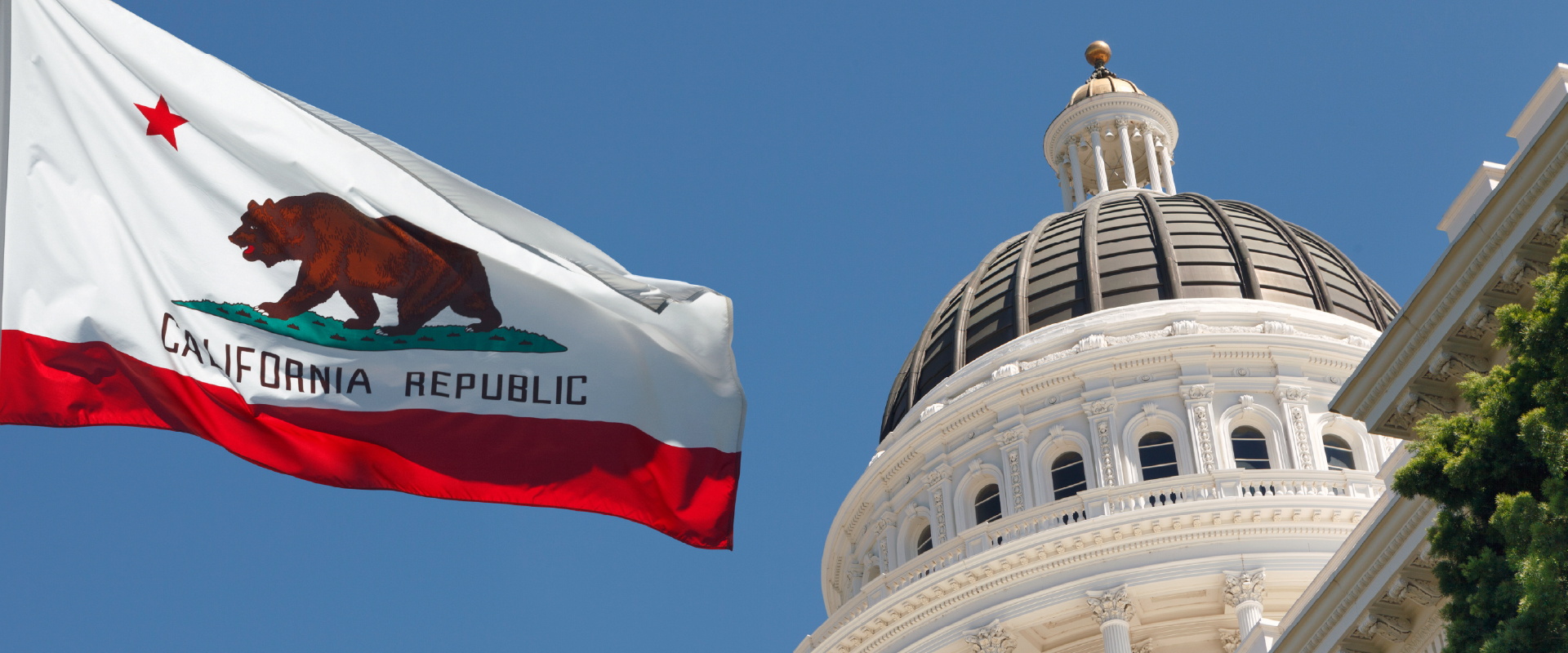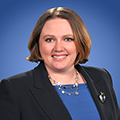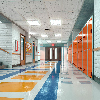California Expands Deaf and Hard-of-Hearing Special Education Supports

November 12, 2025
Number 51
On July 14, 2025, Governor Gavin Newsom signed Assembly Bill (AB) 784, amending Education Code section 56031. Individualized education program (IEP) teams can now provide deaf and hard-of-hearing (DHH) services as stand-alone supports to students who do not require additional specialized instruction. This update empowers IEP teams to better tailor services to meet the unique DHH needs of students, promoting more inclusive and responsive individualized educational planning.
Responding to Uncertainty in IEPs for Deaf or Hard of Hearing Students
Under the “child find” provisions of the Individuals with Disabilities Education Act, local educational agencies (LEAs) must identify, locate, and assess students with exceptional needs. They must also provide these students with a free appropriate public education (FAPE) in the least restrictive environment (LRE), along with special education and related services as outlined in the student’s IEP. The law defines special education as instruction designed to meet each student’s needs and includes services such as speech and language therapy or other supports, when those services qualify as special education rather than designated instruction or related services under state standards.
In the 2023-2024 school year, there were over ten thousand students in California that identified as deaf or hard-of-hearing, which is only a small percentage of the population of students with disabilities. The bill’s author aims to clarify the types of services that LEAs can provide to DHH students. Current California and federal laws do not prohibit LEAs from assigning DHH services as stand-alone supports; however, current law also does not indicate that IEP teams may assign stand-alone deaf or hard-of-hearing services to students who do not otherwise require special education. The author contends that LEAs and IEP teams lack clear guidance and the ambiguity surrounding the provision of deaf and hard-of-hearing services, particularly regarding their use as stand-alone supports causes IEP teams to be confused. As a result, many LEAs opt to place DHH students on Section 504 plans. While Section 504 plans offer accommodations and limited supports, they lack the procedural safeguards essential for students who are DHH. Moreover, these plans do not provide the specialized instruction that some students with hearing impairments may need to achieve academic success.
Providing FAPE through Stand-Alone DHH Services
LEAs have long been delivering stand-alone speech and language services to students who do not otherwise require specialized instruction. Likewise, travel, training and vocational education have generally been recognized as stand-alone services. AB 784 expressly adds DHH services as a stand-alone service option in an IEP and specifies this might include stand-alone auditory training, sign language instruction, or other communication support.
Additionally, AB 784 supports the continued use of credentialed DHH teachers to deliver these services and acknowledges that nonpublic agency staff might help address the shortage of qualified DHH staff in some rural or underserved areas, according to the bill’s author.
The Assembly Appropriations Committee notes that AB 784 could result in minor fiscal impacts as students are transitioned from Section 504 plans to IEPs to address their DHH needs. However, because current law already recognizes DHH services as related services being provided to students through IEPs and because 504 Plans may have also been providing these stand-alone services previously, the ultimate fiscal impact is likely to be limited.
Takeaways
DHH services have been added to the California Education Code as stand-alone services in special education. This means students who require DHH services but no other specially designed instruction, will now qualify for IEPs. LEAs should consider any necessary updated training for their IEP and assessment teams, as well as reviewing current board policies and administrative regulations, as well as procedures and protocols to implement these statutory changes.
If you have any questions about AB 784 or special education in general, please contact the authors of this Client News Brief or an attorney at one of our eight offices located statewide. You can also subscribe to our podcast, follow us on Facebook and LinkedIn, or download our mobile app.
Number 51
On July 14, 2025, Governor Gavin Newsom signed Assembly Bill (AB) 784, amending Education Code section 56031. Individualized education program (IEP) teams can now provide deaf and hard-of-hearing (DHH) services as stand-alone supports to students who do not require additional specialized instruction. This update empowers IEP teams to better tailor services to meet the unique DHH needs of students, promoting more inclusive and responsive individualized educational planning.
Responding to Uncertainty in IEPs for Deaf or Hard of Hearing Students
Under the “child find” provisions of the Individuals with Disabilities Education Act, local educational agencies (LEAs) must identify, locate, and assess students with exceptional needs. They must also provide these students with a free appropriate public education (FAPE) in the least restrictive environment (LRE), along with special education and related services as outlined in the student’s IEP. The law defines special education as instruction designed to meet each student’s needs and includes services such as speech and language therapy or other supports, when those services qualify as special education rather than designated instruction or related services under state standards.
In the 2023-2024 school year, there were over ten thousand students in California that identified as deaf or hard-of-hearing, which is only a small percentage of the population of students with disabilities. The bill’s author aims to clarify the types of services that LEAs can provide to DHH students. Current California and federal laws do not prohibit LEAs from assigning DHH services as stand-alone supports; however, current law also does not indicate that IEP teams may assign stand-alone deaf or hard-of-hearing services to students who do not otherwise require special education. The author contends that LEAs and IEP teams lack clear guidance and the ambiguity surrounding the provision of deaf and hard-of-hearing services, particularly regarding their use as stand-alone supports causes IEP teams to be confused. As a result, many LEAs opt to place DHH students on Section 504 plans. While Section 504 plans offer accommodations and limited supports, they lack the procedural safeguards essential for students who are DHH. Moreover, these plans do not provide the specialized instruction that some students with hearing impairments may need to achieve academic success.
Providing FAPE through Stand-Alone DHH Services
LEAs have long been delivering stand-alone speech and language services to students who do not otherwise require specialized instruction. Likewise, travel, training and vocational education have generally been recognized as stand-alone services. AB 784 expressly adds DHH services as a stand-alone service option in an IEP and specifies this might include stand-alone auditory training, sign language instruction, or other communication support.
Additionally, AB 784 supports the continued use of credentialed DHH teachers to deliver these services and acknowledges that nonpublic agency staff might help address the shortage of qualified DHH staff in some rural or underserved areas, according to the bill’s author.
The Assembly Appropriations Committee notes that AB 784 could result in minor fiscal impacts as students are transitioned from Section 504 plans to IEPs to address their DHH needs. However, because current law already recognizes DHH services as related services being provided to students through IEPs and because 504 Plans may have also been providing these stand-alone services previously, the ultimate fiscal impact is likely to be limited.
Takeaways
DHH services have been added to the California Education Code as stand-alone services in special education. This means students who require DHH services but no other specially designed instruction, will now qualify for IEPs. LEAs should consider any necessary updated training for their IEP and assessment teams, as well as reviewing current board policies and administrative regulations, as well as procedures and protocols to implement these statutory changes.
If you have any questions about AB 784 or special education in general, please contact the authors of this Client News Brief or an attorney at one of our eight offices located statewide. You can also subscribe to our podcast, follow us on Facebook and LinkedIn, or download our mobile app.
As the information contained herein is necessarily general, its application to a particular set of facts and circumstances may vary. For this reason, this News Brief does not constitute legal advice. We recommend that you consult with your counsel prior to acting on the information contained herein.







